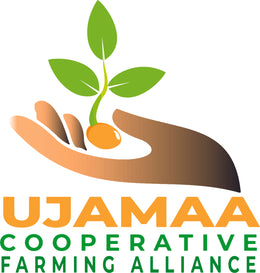
GROW & EAT LEAFY GREENS
GROW & EAT LEAFY GREENS
Leafy greens are low in calories yet high in fiber, making them ideal for weight management. Fiber helps in maintaining a healthy digestive system and contributes to a feeling of fullness, which can prevent overeating. Leafy greens can be incorporated into a variety of dishes. They can be eaten raw in salads, sautéed with garlic and olive oil, added to soups and stews, or blended into smoothies. This versatility makes it easy to include them in your daily diet.
Many leafy greens, especially kale and collard greens, are rich in vitamin K, which is crucial for bone health. Vitamin K acts as a modifier of bone matrix proteins, improves calcium absorption, and may reduce urinary excretion of calcium.
Recent studies suggest that the consumption of leafy greens may be beneficial for maintaining mental health and cognitive function. Nutrients like folate and vitamin K found in greens have been linked to a lower risk of cognitive decline.
The vitamins and minerals in leafy greens can support skin health. For instance, vitamin C, abundant in these vegetables, is essential for the production and maintenance of collagen, providing skin with structure and elasticity.
Incorporating leafy greens into your diet not only brings a host of health benefits but also adds color and variety to your meals.
Leafy greens are nutrient-dense, providing vitamins such as A, C, K, and folate, as well as minerals like iron and calcium. Freshly harvested greens from your garden are likely to retain more nutrients compared to store-bought ones that have been transported and stored for longer periods. Leafy greens are high in antioxidants and other phytonutrients, which can help reduce the risk of chronic diseases such as heart disease, diabetes, and cancer.

GROWING TIPS FOR PLANTING LEAFY GREENS
Late April or May are excellent times for planting leafy greens, ensuring both a productive and manageable garden. If the last frost has passed in your region, you can start planting leafy greens like spinaches, lettuces, and kale outdoors in late April or May.
In many climates, the mild temperatures of late spring are ideal for leafy greens, which tend to prefer cooler weather. They can germinate and grow without the stress of mid-summer heat. The increasing day lengths and warmer soil temperatures of late spring can promote faster and healthier growth. Leafy greens often have a short maturity cycle, allowing them to be harvested just a few weeks after planting.
Planting in late April or May can facilitate a continuous harvest cycle. By planting successively or choosing varieties with staggered maturity times, you can extend the availability of fresh greens from your garden. Cooler spring weather can help in managing pests, as many common pests of leafy greens are less active in cooler temperatures. This can reduce the need for chemical pesticides.




























